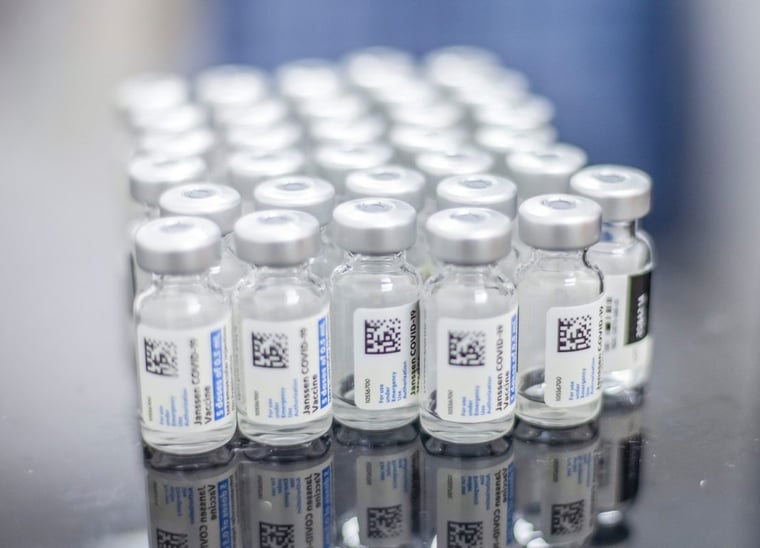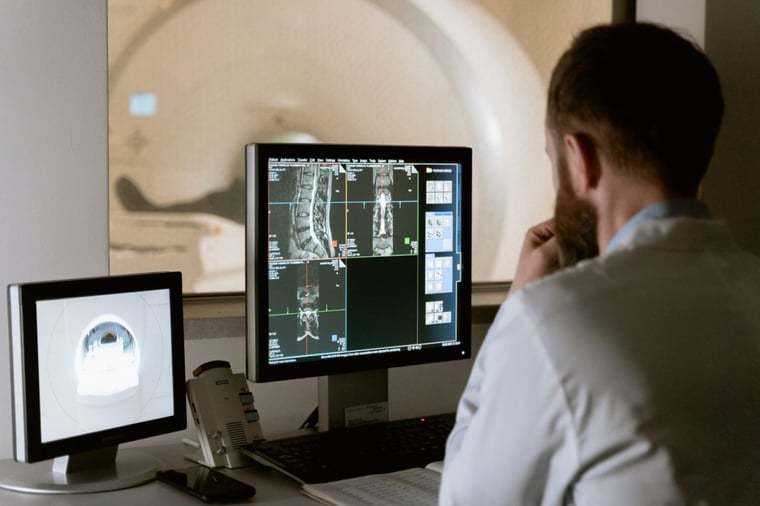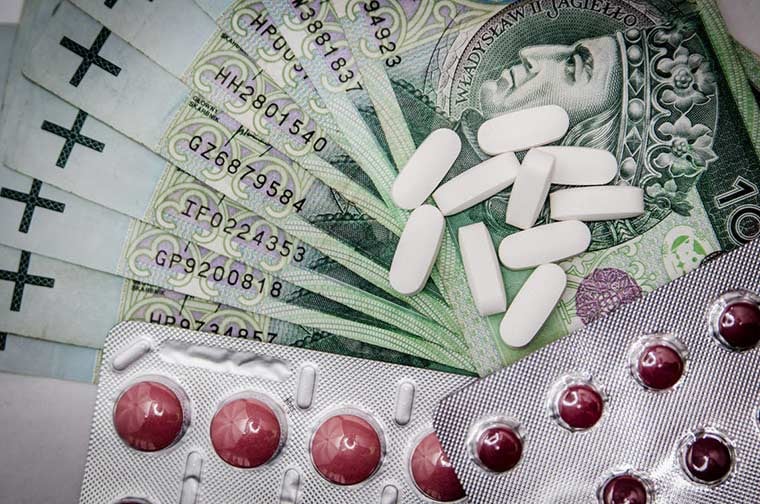
The economics of healthcare 2022
June 2022
by Craig Townsend, Director of Healthcare at 42T
It’s safe to say that the last two years have shifted the global economics of healthcare.
Pandemic control moved point of care from clinics to the home and shortages of hospital staff and space meant many surgeries were delayed. Telemedicine saw a significant rise in funding and adoption which was supposed to improve efficiency. And governments doubled down on diagnostics, bringing mass testing to the public.

As we learn to live alongside the SARS-CoV-2 virus, things are returning to ‘normal’. Although there is a significant backlog in health systems worldwide, what initiatives will the global healthcare sector likely focus on in 2022?
The highlights
The biggest piece of news is that healthcare spending is expected to fall slightly, returning to the pre-pandemic baseline of 6% growth. This is something which health economists were predicting after an unprecedented 11% growth at the height of the pandemic.
Post-pandemic has also led to seemingly better utilisation in care systems, with a smaller number of new job roles expected to treat an ever-growing patient population. The growth is due in large part to care being deferred during the pandemic, the ongoing costs of COVID-19, increased mental health issues and general worsening population health.

Healthcare workers are also experiencing significant emotional, physical and professional stress from two years of COVID-19, with 55% of workers in the USA reporting burnout, the majority of which are aged under 35. Healthcare organisations are fighting to retain talent which they are losing to other sectors with less stress and better pay. This has led to a renewed need to improve the workforce experience.
Low vaccination rates have directly affected many countries' ability to recover from the pandemic. More than half the world’s population is yet to receive a single dose of the vaccine. Although personal beliefs can affect the vaccination rate, limited speed of vaccine rollout has hampered the speed of recovery. This has been particularly evident in areas of high poverty.
With the WHO appealing to the leaders of the world’s 20 largest economies to bring testing and vaccines to the poorest and remotest parts of the world by the end of 2022, we should expect to see a wave of new discovery and funding in low-cost, reliable and field-based diagnostic testing and vaccine delivery.
Pandemic prevention
World leaders and NGOs are calling for better pandemic prevention and prediction. ‘Pandemic readiness’ is likely to inflate healthcare spending throughout 2022, with supply chain, infrastructure, equipment and staffing seeing increased spending.

The pandemic uncovered serious health disparities which many governments are now facing pressure to address. This will lead to a spike in spending in the short term as medical device companies and trial operators recruit more diverse patient trial groups.
Health providers are looking to spend more on safety measures. Although prices for personal protective equipment (PPE) hit record highs due to poor preparation and planning during the pandemic, costs and demand remain high. Investments are also being made into infection prevention and control, from autonomous cleaning of hospitals to mobile clean rooms.
One of the biggest issues during the pandemic was the supply chain, with shortages and disruptions accounting for a significant number of delays in health systems. Therefore, it’s no surprise to see executives within healthcare, medical devices, pharmaceuticals and life science all expecting to significantly increase spending in predictive modelling.
The utopia is an end-to-end view of the entire supply chain, including the consumer. This can be started by collecting customer data on preferences that help ensure the right services reach the right people in a place that they choose to receive it. Buying healthcare should be no different than buying a cup of coffee.

Digital health
The pandemic certainly accelerated healthcare providers' exploration of the digital health and digital experience space. This was primarily so they could maintain relationships with patients during lockdowns. A secondary effect is that it became easier to reach new segments, expanding the reach of many providers.
This has led to a ‘digital first’ mindset. Providers are now developing better mobile applications to connect with patients. This includes using faster and better customer relationship management (CRM) systems to store, sort and interrogate patient data.
Providers are using virtual care and analytics tools to both improve the customer experience, increase utilisation and create regular touchpoints with vulnerable patients. This has led to some concerns around frustrating and alienating some demographics. Perhaps healthcare can learn from other vital industries who've faced similar issues, such as finance.

We are now at a point where patients and clinicians expect digital tools to be part of the overall care journey. The pandemic exposed healthcare organisations as being vulnerable when physical access to patients is removed. In the short term, we should expect a significant increase in investment into digital health, an investment which will pay off considerably in the long run. Its comparable to the digitisation of finance we saw from 2005 to 2015 where many banks moved the point of service from in-branch to online.
A shift in point of care
An ever-increasing population and a rise in non-medical wellness / lifestyle / consumer health has been luring people away from expensive sites of care over the past few years, particularly for minor conditions. This is seen in the USA where insurers look towards care advocacy programs and benefits to keep people out of hospitals, including lower premiums.
And in the UK where general practitioner (GP) and accident and emergency (A&E) wait times have hit record highs, people are being encouraged to approach pharmacists and non-emergency telephone numbers like 111 as a first resort. This has led to consumers shopping around for care options, looking for treatment in more accessible, lower cost ways.

According to a recent Deloitte report, consumers in the US have embraced care outside of the doctor’s office and the number of people using alternatives to traditional point of care which rose significantly during the pandemic, have remained high due to convenience, cost and personal preference.
It appears that emergency services are becoming the last resort - as they should be! A small decrease in utilisation will have a significant impact on both the quality and cost of treatment.
Cybersecurity and artificial intelligence
As more healthcare providers adopt digital tools and services, the cost associated with potential data breaches and ransom attacks increases. Cyber-attacks are a big threat from an operational standpoint. Administrative work can be completely halted as with the 2017 NHS WannaCry attack. When dealing with confidential patient data, a security breach could be life threatening. Patient data could be stolen or even worse, falsified.
This has led to 48% of health industry executives saying they are significantly increasing their cyber budgets in 2022 and exploring automation technology to identify potential flaws. In the same report linked above, 20% of executives surveyed had already started using AI in their cyber security strategy.

Where to from here?
The economics of healthcare will always be driven by the evolution of public health. COVID-19 taught us all that world leaders are woefully unprepared when it comes to serious health risks. Although we'd like to predict that better investment will be made in the preventative side of pandemic prevention - rapid testing, fast vaccine development, etc - the industry has a long way to go when it comes to fundamentals.
Better supply chain management, more effective tools to remove face-to-face point of care and intuitive systems to manage disruption caused by unexpected events are a good place to start.

If you would like to find out more, please contact Craig:
craig.townsend@42T.com | +44 (0)1480 309461 | www.linkedin.com/in/craig-c-townsend
Share this article:
Related Articles

Healthcare & Life Sciences
The future of home healthcare: trends and innovation

Healthcare & Life Sciences
Right to repair: reshaping the medical equipment industry

Healthcare & Life Sciences
The hidden risks with smart injectors - is high-tech sacrificing usability?

What will you ask us today?
We believe in asking the right questions to drive innovation; when we know the right questions, we generate the ideas to answer them.

